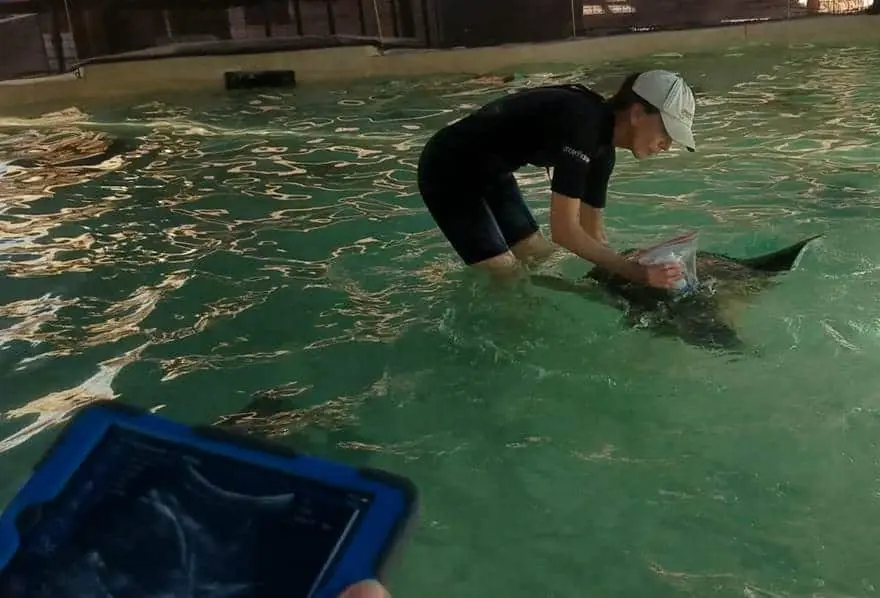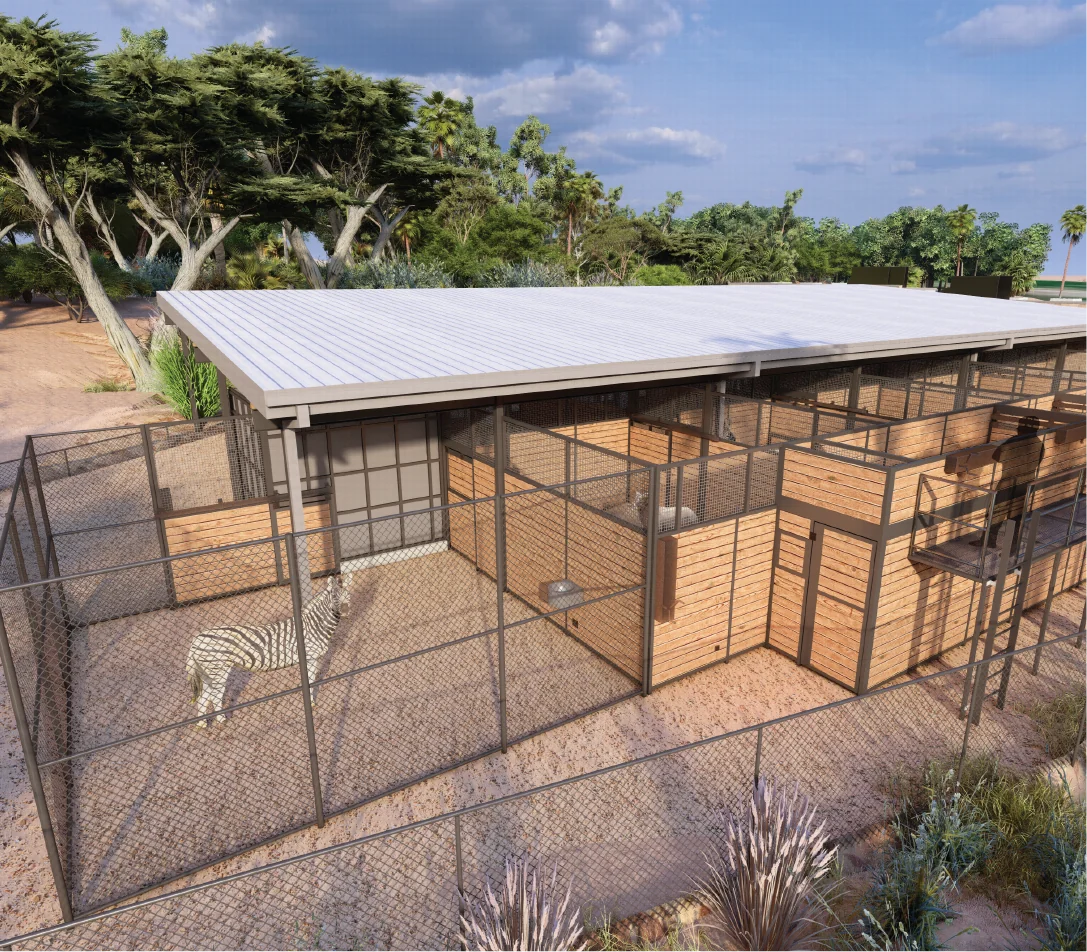Stingray Ultrasound
Blog Safari: Learn About a Stingray Ultrasound!
By Mari Belko | Stingray Keeper
Working with animals to participate in their own medical examination is the goal for most animals care specialists. Stingrays present a unique challenge as they are always moving under the water. We began conditioning cownose rays for physical examinations to learn and eventually improve their care during pregnancies. A healthy and happy environment for adult stingrays usually results in baby rays (pups). Stingrays are pregnant for an estimated nine to twelve months usually delivering one pup at a time.
Training the rays to participate was fairly easy as the rays are extremely social and will sit in our arm while examined. Unfortunately training was the least of our concerns. Traditional ultrasound machines are very expensive and not water friendly. There is also a cord attached to the machine meaning that the ray would have to remain at the side of the pool with little movement. The active probe emits a pulse undetectable to humans but apparently detectable to rays. It is not painful them but it is a sensation they need to become accustom to. All of this was not only time consuming for the keepers but for our veterinary staff. With an entire zoo to care for time is always an issue.
Last year veterinarian intern Rachel Farris suggested a less expensive alternative. She knew of a cordless probe that could transmit the images electronically to an iPad. The Living Collecting management and Veterinary staff of the Phoenix Zoo immediately supported this revolutionary idea. The keepers would be able to train, capture and evaluate the images taken along with medical personal. This kind of technology and usage of it would be groundbreaking, potentially improving the care and well-being of these animals.
Unfortunately there was still a substantial cost involved.
Karl LeClaire, a member and generous donor for over twenty years, has made contributions in support of a variety of animals, and when asked why he wanted to help our stingrays he said, “It was such an unusual request, it caught my fascination.”
During these difficult times, it’s so heartwarming to know that animals cared for by the Phoenix Zoo have a friend like Karl LeClaire.
Now the fun begins as we all have so much to learn. The keepers work with the rays daily to desensitize them to the pulse of the probe. As the rays begin to understand what we are expecting of them they become calmer and remain more stationary. We learn where to place the probe, what is the best angle, and of course how to read the images we receive.
As our understand of this increases we hope to fully understand the gestation cycle of cownose rays as well as help them if and when medical needs arise.
[Visit our Facebook page to see the video!]








